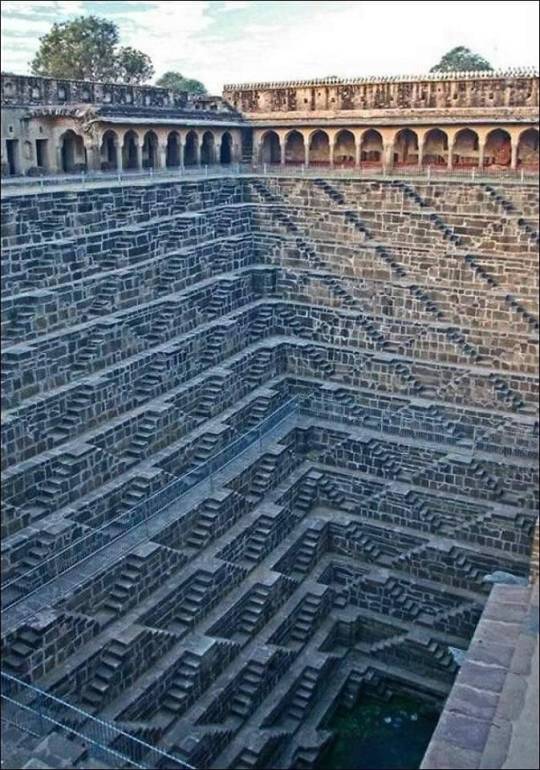#8th c. india
Photo

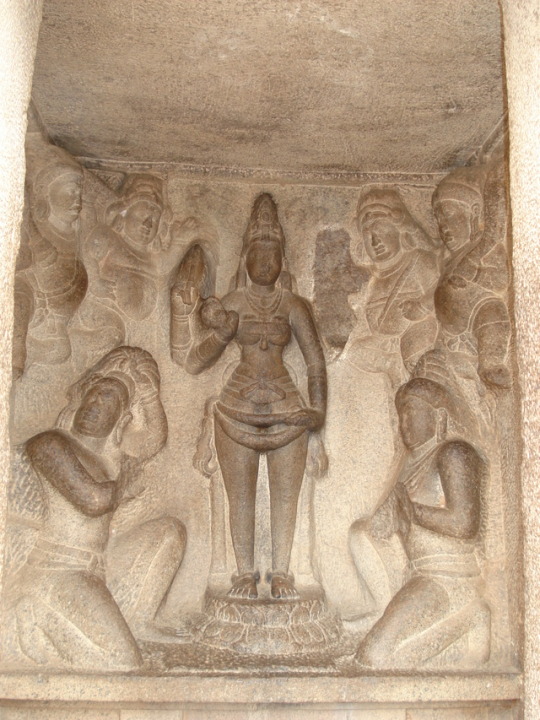


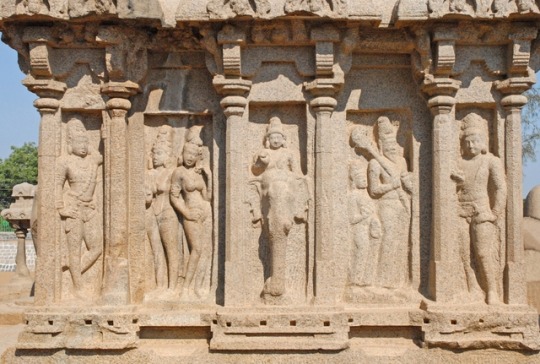
Bas reliefs in Mahabalipurammade in the 7th-8th century; Tamil Nadu, India
#mdpindia#sculpture#mdpsculpture#india#ancient sculpture#ancient#indian sculpture#hinduism#shiva#7th c. india#8th c. india
59 notes
·
View notes
Text

0 notes
Note
i don't know what cbse is like because in icse we only have english and a second language but avoid taking hindi if the marking scheme is rigid. maybe where u live u speak hindi as the regional language or in your home so it might be different for you but if my school offered french i would take it without a single doubt because a) icse hindi marking scheme is BRUTAL i know only 3 people who got above 57/80 in prelims and b) french is kind of an easy language to grasp because the text is in english and many of the basic words are similar to english words especially the larger action verbs and c) (specific to me only but lets see if it helps) i am gujarati and marathi i do not come from a remotely hindi family my parents moved to my city for job opportunities at a very young age and i have grown up speaking english or gujrati in my house so much that i literally did not learn hindi speaking till 3rd grade. even now i have barely a few friends i talk to hindi in, most stuff i watch is in english and i never got good marks inhindi because i lack practice which is KEY.
another thing i would tell you to take french is because you will realistically not come across naturally french speaking people in india so the bar for that will be much lower and easier to break. i know which area of the country you live in and starting off in 8th with hindi your language scoring WILL be at a higher bar for sure than french where you'll start from the basics, and in the event that you make mistakes the examiner will grade you more leniently because you will not speak it as a natural language which in my experience is not something that hindi examiners will do. its also up to what future you want for yourself bc government jobs and stuff will be easier with hindi but for westernish or progressive jobs it's better to take french
EXACTLY LIKE THEY ARE SO LENIENT IN FRENCH AND LIKE HINDI BEING THE MOTHER TONGUE HERE THE BAR IS SO MUCH HIGHER and our sir was literally telling us today how cbse is so lenient with marks in french cause its our third language but also like. i literally cannot understand/read french that well cause during covid i did not study french at all AND AGHHHHH WHY IS THIS SO CONFUSING
#HINDI MEIN PPL DONT GET GOOD MARKS IN HIGHER CLASSES IVE HEARD but i get pretty good marks rn and#my friend's sister got 97 in boards in 10th BUT HER SISTER IS ALSO KIND OF A LANGUAGE GENIUS SO#BAHHH#u cant get full in hindi ever also#so like that will drag my whole average down if it take hindi#BUT ALSOOO ALL MY FRIENDS R TAKING HINDI#and my best friend who is one yr above me says its really not that hard#and i will have her help#and all my friends help#but in french i will only have my sister who is in college and has forgotten most of french#and google ofc#ugh
9 notes
·
View notes
Text
Matriarchy, Feminism and 8th of March

First of all I might say that everything I am doing is inspired by women and for women.
And of course this day is not about showing the love , because love is an action ( according to E.Fromm) , which should be done /manifested every day.
This day is actually about the woman rights and power , and about remembering of those who was fighting for this rights.
Women received the right to vote during the 20th century:
Earliest 1910s - US
And one of the latest in Europe is Spain - 1970s
One of latest countries where women received the right to vote is Saudi Arabia in 2015.
In 2023 Vatican still not says if women could vote.
2020
The UN theme for International Women's Day was: 'I am Generation Equality': Realizing Women's Rights'.
March in Pakistani called «Aurat March» was marred by attacks from stone throwers, after a failed attempt to have it banned as un-Islamic.
And this is happening in 2020 !!!
In April 2019, cleric Jawad Naqvi had called march organizers "the most evil of all women".
In Bishkek, the capital of Kyrgyzstan, police detained dozens of marchers shortly after masked men reportedly attacked the march.
And the most terrible things are happening now in Iran , where people are shooted from machine-guns for support of women rights
Not-surprising that russia and Iran are united, because they are the same kind of evil and yearn for each other.
But it wasn’t always like this.

The thing is that living in some period of time we accept some things (social constructs for example) for given. We refer for some concepts as static , however history shows us that they are not.

If we refer to the most ancient myths , we can discover that the primordial and supreme Deity was Goddess , thus Woman
In Greek Mythology - Gaia - is Mother Earth, her husband is Uranus. Her first sun - Kronos , and after son of Kronos - Zeus seized power in Olympus.
In Shumer Mythology this is Istar.
«The idea of primal female deity , first adored , then brutally side-lined by a male deity is a consistent theme in mythologies around the world.
The Tantrik tradition of India speaks of the primal one, Adya, who took the form of a bird and laid three unfertilised eggs from which were born Brahma, Vishnu and Shiva.
Egyptian mythology acknowledges a time before gender. Then there was Atum, ‘the Great He-She’, who brought forth the god of air Shu and the goddess of dew Tefnut who separated Geb, the earth-god, from Nut, the sky-goddess, who gave birth to Isis and Osiris, the first queen and king of human civilisation. Then Seth killed Osiris and declared himself king, until Isis gave birth to Horus and contested his claim.
In these stories from around the world, the male deities compete for the female prize. This can be traced to nature, where all wombs are precious but not all sperms. So the males have to compete for the female. In many bird species, the female chooses the male with the most colourful feathers, the best voice or the best song, or with the capability of building the best nest. In many animal species, such as the walrus and the lion, the alpha male keeps all the females for himself; thus there are always ‘remainder’ males who do not get the female. This selection of only the best males creates anxiety amongst the not-so-good males and translates into the fear of invalidation in the human species. To cope with this fear of invalidation, social structures such as marriage laws and inheritance rights come into being, often at the cost of the female.
As human society learnt to domesticate animals and plants, trade and build cities, we see a gradual shift in social laws, deterioration in the status of women, and rejection of Goddess-worship in favour of God-worship.»
(C) Devdutt Pattanaik - 7 Secrets of Goddess

A few anthropologists even argue that Krishna’s dance Raasa-Leela may have its roots in old matriarchal tribes where the women valued only one male of the village.
In such female-dominated cultures, the male could not refuse the woman: in the Mahabharata, when Arjuna refuses her advances, Urvashi curses him to turn into a eunuch. Any man who forced himself upon a woman was killed.
To ensure that the dominant males did not have exclusive and eternal rights to women, the ritual of killing the chosen males at regular intervals emerged.
The only way to survive being killed at the end of the term as king and consort of the Goddess was by castrating oneself. And so in the Near East, the priests of Cybele, called the Galli, ritually castrated themselves emulating Attis, the castrated son/lover of the goddess.
Of course that are rather bloody practices , but now the pendulum has swung in another direction.

In Astrology the 8th House represents all the Unknown , Mystic , Sex and Death.
The connection of Sex and Death we can trace in myths across the Globe as well.
The close connection of sex and death, sex and pleasure, and pleasure with women led to that men began to associate women with amorality , suffering and vulnerability.
Renunciation of women guaranteed freedom from suffering.
This we can trace in Biblical mythology: Samson succumbed to passion for the insidious Philistines Delilah and losses his power.
In Buddhism the daughters of Mara ( the greatest Demon) are associated with decay sickness and death. Rejecting them Gautamma Siddhartha gained freedom from suffering.
In Tantra and Yogic tradition we have practice called - Brahmacaṛya ( celibacy ) which is supposed to give a mystical powers called «Siddhi»
We can see how along the course of history men tried to cheat biology.
Also in Hindu there is a tradition called «Sati» ( in name of wife of Shiva who stepped into the fire ,when her husband was offended)
It is supposed that the fidelity of a woman gave her magical powers. This believe in «sati» has led to concept - if man died for whatever reason , it was the cheating wife who couldn’t prevent it. She was encouraged to burn herself on a funeral pyre to prove her purity.
The time goes on and there is a power struggle in the cities - and women becomes a trophy in this game - «Helene of Troy»
All this leads to the isolation of women for their «own safety»
Woman become a commodity , she loses the ability to control her life and her body.
At some time the men took over all economic activity , and the only activity available for women was a temple prostitution.
The body of woman, so as the land was owned by a father, brother, husband and even son.
The main reason of invention of the proprietary rights - is the fear and insecurity of men.
Gradually, the gaze turned upwards towards the sky. Gravity became a fetter, the earth a trap, and women bondage. Escape was sought. The serpent, messenger of the goddess, was rejected in favour of winged beings or angels who take humanity to ‘higher’ realms, above the earth.
In biblical mythology, the serpent becomes the symbol of the Devil, he who disobeys and tempts others to disobey. God, who makes all the rules, becomes male and resides in the sky. Prophets carry his word to earth. They are mostly male: Abraham, Moses, Jesus, Muhammad. They overshadow the few female prophets: Miriam, Deborah and Anna.

In Hindu Mythology Serpent represents many things:
Wisdom ( we can see it always on the neck of Shiva)
Kundalini Energy

Before those who looked at the earth below saw it as the Goddess, manifesting in pairs and triads, embodying the paradoxes of the world. There was Ishtar, the fertile, and Ereshkigal, the barren, in Sumerian mythology; Kali, the wild, and Gauri, the domestic, in Hindu mythology; the cow Hathor and the lioness Sekhmet of Egyptian mythology. In Greek mythology, there are the Fates triad who spin thread, the length of which determines the duration of human life, and the Grace triad who constitute the three seasons of spring, summer, and winter. Thus, the world is seen in feminine terms.
In Christianity now the only one image on woman is the Virgin Mary, but only because she was a mother of God.
In Islam the only one image is « Fatima hand» , the daughter of Prophet.
Why not so many ?
As you can see this turmoil and pendulum , which shifted from one side to another.

Great honor and praise to the feminists who fought for women's rights
But what modern feminism offers?
It says that woman must struggle to win in a man-game. In patriarchal social structure controlled by men. This is thinking inside the box - which is leading to nowhere.
- - - - - -
On other hand women should accept the feminine nature and allow it to manifest itself , beyond this social construct.
Social construct is a human made creation. But nature it is something deeper, something which corresponds to our soul, psyche , genetics.
It is more profound , and beyond any social construct. Society is always changing, but archetype of the primordial wild woman is something which may last even beyond the time unchanging.

As Dr. Clarissa Pinkola Estés says the one may address this archetype to discover one’s nature through many things such as:
Dreams
Instincts
Intuition
Acceptance of different aspects of the divine in oneself

Archetype of Primordial Woman is the basic archetype , based on which various Goddesses , representing various aspects of Psyche emerged.
One of such Archetypes is Greek Goddess - Baubo.
Known as the goddess of mirth, she is depicted as bawdy and sexually liberated.
In Hindu mythology Deities always have pairs.
Wild Kali awakens Shiva to life with her passion, without her is only a shava ( corpse)
When Mahishasura is threatening the World and even Brahma, Vishnu and Shiva cannot defeat him , then devas ask Goddess for help .
And Durga , Mahadevi slays him.

Hindu mythology with its variety of Gods and Goddesses didn’t lost the feminine and masculine balance.
In conclusion
I think it’s time for Man to evolve above the fear of insecurity and start working towards the World where Woman can manifest herself freely.
I am sure it would be a much better place.
Reference and further reading :
Mostly this text in inspired by great writer and mythologist -
Devdutt Pattanaik. I quote many thoughts from his book " 7 Secrets of Goddess"
Clarissa Pinkola Estes:
"Women Who Run with the Wolves: Myths and Stories of the Wild Woman Archetype"
Erich Fromm: " The Art of Loving"
#astrology#dharma#philosophy#pscyhedelic#matriarchy#feminism#woman rights#balance#archetype#psyche#psychology
2 notes
·
View notes
Text
CITRUS FAMILY
Where do citrus fruits come from?
All of the citrus fruits are from the family Rutaceae. This family is also known as the rue family and contains flowering plants that generally have a strong scent. The genus Citrus includes oranges, grapefruits, limes and lemons. These fruits have been cultivated since ancient times. They have probably originated from Australia, New Caledonia and New Guinea, although some research points to them originating in Southeast Asia. Many of the species are hybrids and there is speculation that even the wild true-breeding species are actually hybrids originally.
What do citrus fruits do?
All of the citrus fruits are noted for their fragrance. This is due to limonoids and flavonoids (both of which have strong antioxidant and antibacterial properties). They can help prevent kidney stones, as they contain high levels of citrate. Lemons are the highest, drinking diluted lemon juice daily has been shown to decrease kidney stone formation.
The vitamin C content of citrus fruits is legendary, and regular consumption has been found to decrease your cardiovascular and heart disease risks, whilst increasing life expectancy. Vitamin C is also a natural anti-histamine, preventing histamine release and aiding in its detoxification. Vitamin C functions as an antioxidant, reducing oxidative stress.
How do I use citrus fruits?
Use the peel! It’s full of antioxidants and can help fight free radicals, balance blood sugar levels and support thyroid health. You can buy candied peel for desserts here.
Juice, have a look at our smoothie and juice recipes.
Mix with water, a slice or 2 of a citrus fruit in hot water first thing in the morning will help to alkalise your system and aid in cleansing.
What fruits do Real Foods sell from the citrus family?

Lemons are probably a hybrid between a bitter orange (C. Aurantium) and a citron (C. Medica). Although it could be a hybrid involving limes! They contain high amounts of citric acid, around 5-6% of total weight. Initially discovered in India, lemons were avilable during the Roman Empire's heydays but were not widely cultivated until the Arabs introduced them into Italy in the 8th century. Colombus took them to America and it was then that their amazing effects on scurvy were noticed. They are highly valued for their juice and high vitamin C content.
Limes - C. Aurantifolia are so called because they have long been confused with lemons. The name is derived from ‘limun’. The 2 most popularly cultivated limes are the Mexican or key Lime and the Persian lime. Limes were unknown in Europe before the crusaders and were probably imported from Palestine after Arabs had introduced them there. Their incredible flavour and high essential oil content is used widely in cooking and is popular for marinades.

Tangerines – C. Tangerina is probably derived from C. Oculata. Less sour and sweeter than oranges, the name is derived from Tangiers which grew them widely at one time. The red-orange skin is usually what separates them from mandarins.
Satsumas – C. Unshiu are probably of Japanese origin and are very easy to peel. Sweet, their nickname the “Christmas orange” is because they are very popular as Christmas treat in the U.K.
Sweet oranges are known as Citrus Sinensis and are a hybrid between a pomelo (C. grandi s or C. maxima) and a mandarin (C. reticulata). There is no history of the orange being grown in the wild and it’s thought to have been selected in China or northern India from their cultivation of mandarins and pomelos. Oranges have been grown from at least 2500 B.C.E in China.


Bergamot (Citrus Bergamia) are a hybrid between lemons and oranges (it’s why they’re sometimes called orange bergamot and others call them lemon bergamots). They are relatives of sour oranges and are famously unpalatable. Similar to Seville in the sense they are prized for their zest, their flavour and pith for marmalade making and their scent. They do not taste very nice however! Bergamots are only available occasionally through the year.
2 notes
·
View notes
Text
vimeo
Subodh Gupta - India and its culture are an amazing source of inspiration to both local and foreign designers. The colors, textures, diversity, habits and an environment of constant change is what makes India an exciting place. In essence, design is everywhere and the future of design in India will be inspired from this chaos. These videos tailor-made to introduce each speaker of IDF 2013 are a testament to that fact.

Public Art Fund will unveil Ancestor, an 18-foot tall patinated bronze sculpture by New Delhi and London-based artist Bharti Kher, Wife of Subodh Gupta. The powerful new monument will grace Doris C. Freedman Plaza at the southeast entrance to Central Park beginning September 8th and continuing until August 2023.
2 notes
·
View notes
Photo

☄ 𝗜𝗦𝗦𝗨𝗘 𝟭𝟭𝟬. → ❝ 𝐓𝐇𝐄 𝐎𝐑𝐀𝐂𝐋𝐄 ❞
☼ / ☃ seasonal note; as june begins, we are officially in the season of WINTER; general temperature ranges are a low of 14°C and a high of 27°C.

☄ → magnetic island events; june !
THE GLITTER BALL !
in honour of pride month, and because it’s been a little moment since olympus has had a big drag night. so we have some amazing talents from both local and international drag queens and queer performance artists. this will be host at olympus nightclub and club bacchae. get ready for a night of glitter, sequins, sass, death drops and genuine joy... this is the GLITTER BALL !
→ more details will be posted as this is a future roleplay event.
+ FOR WORLD ENVIRONMENT DAY & WORLD OCEANS DAY; CLEAN UP THE SHORE !
this sunday there will be a community rallied clean up at midas beach, calisto bay, bellerophon bay and neptune bay, refreshments are provided as we team up to tidy up our beaches, bring a pair of gloves and a garbage bag and some aqua-friendly shoes, (and of course, sunscreen!)
→ this is a post-less mini event, feel free to reference this in any threads if you choose.

☄ → magnetic island birthdays; june !
GEMINI
— 7th june + charming morgan aka. DIONYSUS / @uncharmiing (25!)
CANCER
— 27th june + samira aguilar aka. MACARIA / @blessedsamira (26!)

☄ → showing @ pythia’s drive in!
tomorrow when the war began (2010) — following a group of eight teenage friends find themselves in the middle of an unexpected war in a small coastal country town after returning from a remote camping trip. cut off from the rest of the world and everyone they knew, they must find their way in the new world, where they are among only a few remaining free australians, learning to defend themselves against the hostile invaders and save their detained families.
☄ + our australian film of the month.
the lost city (2022) — a reclusive romance novelist on a book tour with her cover model gets swept up in a kidnapping attempt that lands them both in a cutthroat jungle adventure.
inside out (2015) — eleven-year-old riley moves to san francisco, leaving behind her life in minnesota. she and her five core emotions, fear, anger, joy, disgust and sadness, struggle to cope with her new life.
brokeback mountain (2015) — wyoming in 1963, jack twist and ennis del mar are hired by rancher as sheep herders in, developing a sexual and romantic bond up on brokeback mountain. though ennis marries his longtime sweetheart and jack marries a fellow rodeo rider, the two men keep up their tortured, taboo, secretive and sporadic affair over the course of more than 20 years.
☄ + our lgbti+ film of the month!
pirates of the caribbean: at world’s end (2007) — as the east india company gains untold power and persecutes pirates en masse, will, elizabeth, captain barbossa, tia dalma and the crew of the black pearl decide to bring captain jack sparrow back from the dead for one final battle.
☄ + our anniversary film of the month! (15th anniversary)

☄ → dates of note for the island; june !
+ MONTH WIDE !
— 🌈 🏳️⚧️ 💃🏽 pride month, time to fly your flags and celebrate your rainbow colours, identities and authentic selves.
— 🏕 🔥 🌳 camping & great outdoors month, what better excuse to go for a cheeky mini camping trip; light a bonfire and roast some mashmallows and get in touch with the islands great outdoors.

+ MARK YOUR CALENDARS !
3RD JUNE ! NATIONAL DONUT DAY — free donut with any medium or large beverage at your local coffee places island-wide!
5TH JUNE ! WORLD ENVIRONMENT DAY — there will be a community rallied clean up at both midas beach and neptune bay.
8TH JUNE ! WORLD OCEANS DAY — 15% off tours at delphinus tours, wed-sun.
12TH JUNE ! NATIONAL RED ROSE DAY — why not give a floral gift? pick up a complimentary red rose with every purchase over $15 at violet and lily floristry.
21ST JUNE ! NATIONAL MUSIC DAY — a grand opening on the island is happening, so musically-inclined folks and fans... keep your eyes and ears open!
2 notes
·
View notes
Text
The Fake Texts of Ancient Greek 'Historians': the Behistun Inscription, Ctesias, Diodorus Siculus, Darius I the Great, and Semiramis
In a previous article published under the title 'Aristotle as Historical Forgery, the Western World’s Fake History & Rotten Foundations, and Prof. Jin Canrong’s Astute Comments', I wholeheartedly supported the position taken by the prominent Chinese Prof. Jin Canrong about Aristotle and I explained why Aristotle never existed as he is known today and most of his texts were not written by him, but by the pseudo-Christian Benedictine monks of Western Europe for the purpose of the ferocious imperial and theological battle that Rome carried out against New Rome-Constantinople and the Eastern Roman Empire. You can find the table of contents and a link to the publication at the end of the present article.

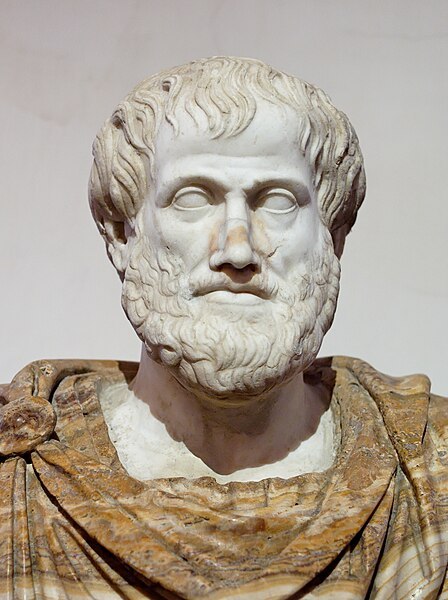
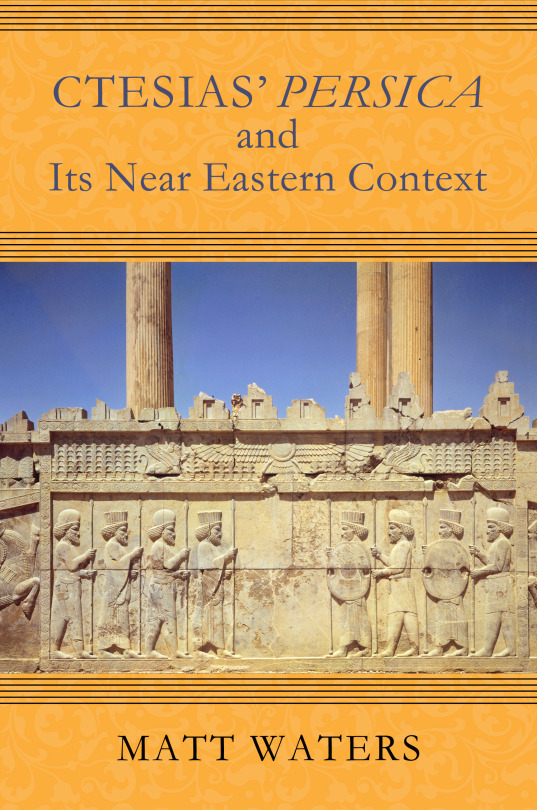
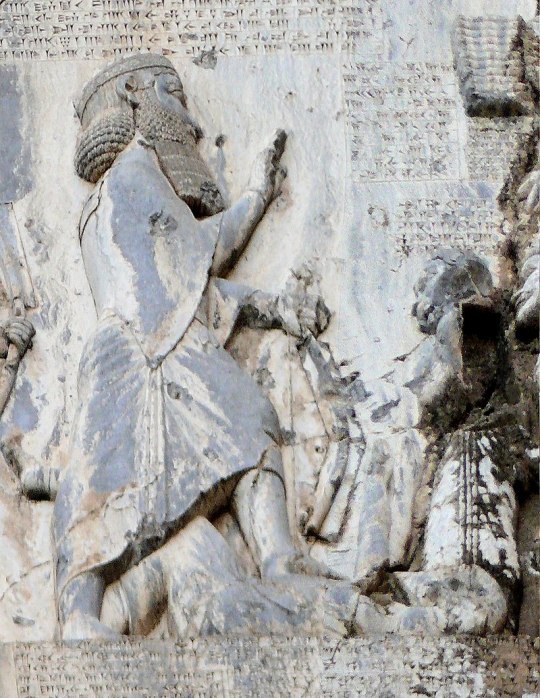
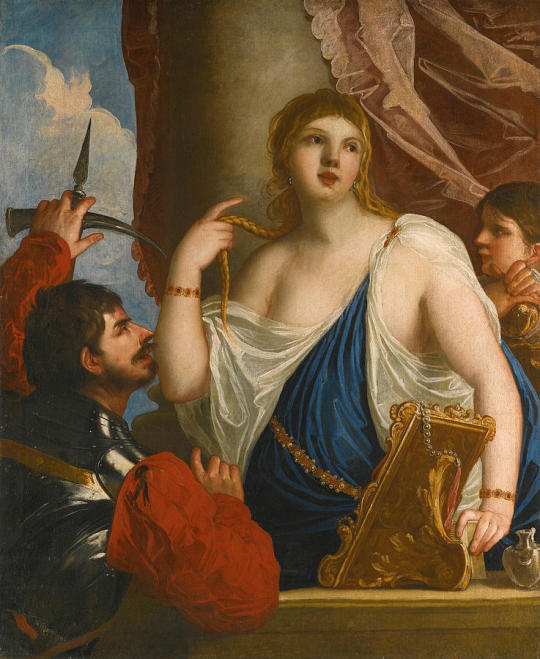
Contents
Introduction
I. A fictional concept: the origin of the fraud
II. A construct based on posterior textual sources
III. The deceitful presentation
IV. 5th century BCE texts found in 15th c. CE manuscripts do not make 'History'.
V. Abundant evidence of lies and deliberate distortions attested in the manuscript transmission
VI. Darius I the Great, the Behistun inscription, and Ctesias
VII. The historical Assyrian Queen Shammuramat and the fictional Queen Semiramis of the 'Ancient Greek sources'
VIII. The malignant intentions of the Benedictine liars: from the historical Darius I the Great to the fictional Semiramis
IX. The vicious distortions of the Benedictine liars: from Ctesias to Herodotus
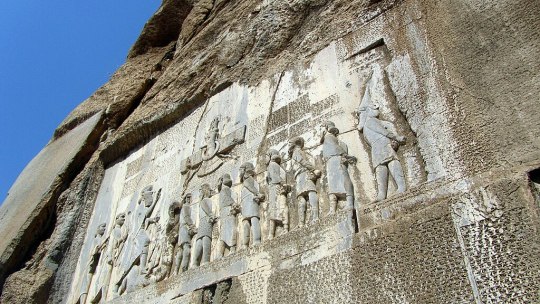
The Behistun inscription
Introduction
In the present article, I will offer a typical example of text falsification carried out by the Catholic monks, who did not 'copy and preserve' manuscripts of ancient Greek and Latin texts, as it has been mendaciously said by Western European and North American academics and lying scholars, but they purposefully falsified, distorted, concealed, destroyed and/or contrived numerous texts.
This enormous forgery took place in Western Europe between the 2nd half of the 8th century and the 1st half of the 15th century; the colonial era was launched exactly afterwards. For this reason, few manuscripts with Ancient Greek and Roman texts date before the 8th c.; in fact, most of them have been either distorted and replaced or hidden in the vast libraries still owned, controlled and administered that the anti-Christian Roman Catholic Church.
The purpose of this devious and evil effort was the fabrication of a fake narrative about the forged antiquity and the supposed importance of the Western Europeans according to the needs of world conquest, prevalence and preponderance of the pseudo-Christian Roman Catholic Church; this bogus-historical dogma, as direct opposition to and ultimate rejection of Orthodox Christianity, would be initially imposed as the 'scientific discipline of History' in Western Europe and subsequently projected onto the rest of the world by means of colonial invasion, indigenous identity destruction, moral integrity demolition, cultural heritage disintegration, educational subordination, economic exploitation, military subjugation, and socio-political domination.
In other words, the monastical scribes and copyists created an entirely fake Euro-centric past, which became the rotten foundation of Western Europe. This fallacy became known as Judeo-Christian world and Greco-Roman civilization. However, the decipherment of ancient languages (Egyptian hieroglyphic, Old Achaemenid Iranian, Assyrian-Babylonian, Sumerian, Hurrian, Hittite, Urartu, Ugaritic, etc) and the study of millions of original texts, which were not copies of earlier sources but contemporaneous to the events that they narrated, sounded the death knell of the era of history fabrication programs.
With the post-Soviet rise of the great continental powers (China, India, Russia, etc.), the economic-military-political-ideological-educational-academic-cultural tyranny of the Western World started being overthrown throughout the earlier colonized world. The historical forgery that the colonial rulers imposed collapsed, the falsehood of the Eurocentric dogma of World History started being revealed and rejected, and an overwhelming project of total de-Westernization appeared as a prerequisite for the liberation of the Mankind from the lies of the European Renaissance, the Western Humanities, the White Supremacism, the Western European colonialism and racism, as well as from the falsehood of numerous subsystems of the construct, such as Classicism, Hellenism, Orientalism, etc.
In our days, it is imperative for anti-colonial scholars to unveil the distortions applied to Ancient Greek and Latin texts by the medieval monks. Consequently, historians from all over the world have to work together in order to denounce and obliterate the Western fraud and the fake History of the Western Man, which consists in arbitrarily taking 14th c. CE manuscripts as authentic narratives of Ancient History.
I. A fictional concept: the origin of the fraud
Apparently, the present brief article cannot be an exhaustive presentation of the Western fraud, and of the historical forgery that the Western monks, manuscript copyists, collectors, academics and propagandists attempted to impose worldwide through colonial conquests, massacres and tyrannies. However, I can still enumerate the major founding myths of the Western World.
Two thematic circles of historical distortions and fraudulent claims made by the Western academia revolve around the following two entirely fabricated entities, which have conventionally but erroneously been called
a) "the Greco-Roman world" and
b) "Biblical Israel" and "Judeo-Christian civilization".
These ahistorical entities never existed. The original concept of those notions is purely fictional, and it therefore remains always unquestioned in the fraudulent Western universities. In this regard, the sources that the Western academics evoke to support their claims are posterior, untrustworthy, forged and therefore worthless.
At times, some of those texts represent merely ancient authors' misperceptions of earlier texts and authors; however, more often, the ancient texts have been tampered with. On other occasions, ancient texts that refute the lies of other historical sources are hidden from the general public and conventionally discussed among the Western academic accomplices.
II. A construct based on posterior textual sources
The entire construct hinges on the deceitful presentation of several types of material forged, collected, concealed, interpreted, contextualized, narrated, repeatedly but intentionally discussed, supposedly questioned, and selectively popularized; this was due to the fact that the said material was incessantly utilized for the colonial needs and targets of the Western European powers (England, France, Holland, Spain, Portugal, and more recently the US). In fact, the Western World's fake History was created as the ultimate support of all colonial claims.
This process happened within a system in which posterior textual sources (preserved in medieval manuscripts) have occupied the central position, whereas the ancient epigraphic material, which was contemporaneous to the historical events under study, has been deliberately disregarded.
All later discovered data and pieces of information were either adjusted to the construct or methodically hidden; this is how the original concept, pathetically believed almost as a religious dogma, remained totally unchallenged down to our days.
III. The deceitful presentation
The quintessence of the deceitful presentation involves a vicious trick; people (pupils and students, but also scholars and intellectuals, as well as the general public) are taught and made accustomed to care mainly about the absolutely insignificant dates of birth and death of historical persons (authors, rulers, etc.), and not about the dates of the manuscripts in which these individuals are mentioned as supposed authors; this situation turns readers, students and scholars into pathetic idiots.
Subsequently, we cannot seriously afford to describe Herodotus as a 5th c. BCE writer, because there is no manuscript with texts attributed to him, dating before the 10th c. CE. In addition, if we take into account the enormous number of other ancient authors decrying, denigrating and rejecting Herodotus' absurdities and malignancy, we have to permanently and irrevocably obliterate Herodotus from the History of Mankind and consider his false, paranoid and racist texts as a double Crime against the Mankind:
first, with respect to the original narrative (to which we don't have access as it was distorted by medieval monastical scribes and copyists) because the author attempted to disparage the superior Iranian civilization and the majestic Achaemenid universalist empire, while undeservedly praising the South Balkan barbarians, and
second, as regards the currently available text, which was forged as per the discriminatory intentions of the monks who altered and distorted it in their effort to fabricate the fake, modern divide (or dichotomy) East-West, and to offer a shred of historicity to it.
IV. 5th century BCE texts found in 15th c. CE manuscripts do not make 'History'.
People get therefore addicted to considering as a true and original 'work' (of an ancient author) the manuscript (or manuscripts) in which the specific treatise, essay or book was copied perhaps 10 or 15 centuries after the author composed it. Due to a long chain of intermediaries (namely library copyists, librarians, scholars, monks, collectors, purchasers and/or statesmen), the transmitted text may have been partly or totally changed.
There is absolutely no guarantee as regards the honesty, the good intentions, the unbiased attitude, and the benevolent character of the perhaps 5, 10, 20 or 50 persons who -living in different eras and without knowing one another- may have constituted the chain of (unknown to us) intermediaries between the hand of the author and that of the last copyist whose manuscript was preserved down to our times.
Example: very little matters today whether the ancient author Diodorus Siculus or Siceliotes (西西里的狄奧多羅斯) actually lived in the 1st c. BCE or in the 3rd c. CE; quite contrarily, what is important for history-writing is the fact that the earliest known manuscript of his famous 'Bibliotheca Historica' (世界史) dates back to the 10th c. CE.
Consequently, the first piece of information that should be stated after the name of any 'ancient' Anatolian, Macedonian, Thracian, Greek, Roman and other author is the date of the earliest extant manuscript of his works.
V. Abundant evidence of lies and deliberate distortions attested in the manuscript transmission
An extraordinarily high number of original sources excavated in Mesopotamia, Egypt, Anatolia, Canaan, Iran and elsewhere, and subsequently deciphered, can be dated with accuracy; example: the Annals of great Assyrian emperor Tiglath-pileser III (745-727 BCE) were written during his reign. They are contemporaneous and therefore original.
However, in striking contrast to them, almost all the manuscripts with the works of ancient Greek and Roman authors whose texts have formed the backbone of the fraudulent historical dogma of the Western academia are not contemporaneous but posterior by, at times, 1500 or 2000 years.
Even worse, numerous ancient Greek authors' texts were not preserved through a manuscript tradition at all; they were saved as references in posterior authors' works. This concerns, for instance, Ctesias (克特西亞斯), an Ancient Carian (Anatolian) physician and erudite scholar, who lived and worked in the court of the Achaemenid Iranian emperor Artaxerxes II in the 5th c. BCE.
Later, willing to offer potential guidebooks to Iran and India for the use of various peripheral peoples and tribes of the Balkan region, Ctesias elaborated in Ancient Ionian (愛奧尼亞希臘語) two treatises to describe the state of things in Iran and in India. To the Western academic bibliography, his works are known (in Latin) as 'Persica' and 'Indica'.
These texts were not saved integrally in manuscripts copied for the purpose of preserving Ctesias' works, but they were preserved in Diodorus Siculus' 'Bibliotheca Historica'. Although he is not known through authentic and contemporaneous Iranian sources, we can deduce that Ctesias certainly spoke fluently the official language of the Empire and read Old Achaemenid cuneiform. Eventually, he may have also studied and learned Babylonian and Elamite cuneiform, namely two ancient Mesopotamian cuneiform languages and writings the use of which was maintained by Iranian scribes.
Apparently, Ctesias had a firsthand insight, as he lived for many years in Parsa (Persepolis), the capital of the Achaemenid Empire and he also traveled extensively along with the Iranian emperor. But, unfortunately, the following ordeal was produced.
VI. Darius I the Great, the Behistun inscription, and Ctesias
One century before Ctesias served Artaxerxes II, the empire of Iran was saved by Darius I the Great (大流士一世; reign: 522-486), who overthrew a usurper, namely the Mithraic (密特拉教祭司) magus Gaumata (高墨达), and by so doing, preserved on the throne a dynasty of faithful Zoroastrian (瑣羅亞斯德教徒) monarchs.
To commemorate his great victory and the consolidation of the his dynasty, Darius I the Great had an enormous rock relief and a monumental inscription (貝希斯敦銘文) engraved on the rocks of Mount Behistun (貝希斯頓山), at a distance of 150 km west of Hamadan (哈马丹; Ekbatana/埃克巴坦那) in Western Iran (15 m high by 25 m wide and 100 m up the cliff). As it can be easily understood, these events occurred after the assassination of Cambyses, at the very beginning of Darius I the Great's reign.
It goes without saying that the successors of Darius I the Great and the imperial Iranian administration knew perfectly well the historical details and were fully aware of the imperial inscription that immortalized the event, which had obviously become the cornerstone of the imperial education.
VII. The historical Assyrian Queen Shammuramat and the fictional Queen Semiramis of the 'Ancient Greek sources'
However, one century later, when Ctesias lived in Iran, served the Iranian Emperor, and spoke Old Achaemenid Iranian (and if not, he was surrounded by the Empire's top interpreters and advisers), something disastrously odd 'happened'.
According to Diodorus Siculus, who explicitly stated that he extensively quoted from Ctesias' text (Bibliotheca Historica, II 13), the imperial Carian physician and author appears to have attributed the Behistun inscription and the rock reliefs to none else than the Assyrian Queen Shammuramat (薩穆-拉瑪特), who was the queen consort of the Assyrian Emperor Shamshi Adad V (沙姆什·阿達德五世; reign: 824-811) and co-regent (811-805) during the first years of reign of her son Adad Nirari III (阿达德尼拉里三世; reign: 811-783)!
Furthermore, in the 'Ancient Greek' text of Diodorus Siculus, the monumental inscription was said to be written in Assyrian cuneiform (Συρίοις γράμμασιν)! Even worse, in the same text (as preserved today), it was also stated that, in the rock relief, there was also a representation of the Assyrian queen!
Ctesias' text, as preserved by Diodorus Siculus, is truly abundant in information, but it is historically impossible and therefore entirely forged. Due to this and many other texts, an enormous chasm was unnecessarily formed between
a) the historical queen Shammuramat of Assyria, whose historicity is firmly undeniable, due to the existence of several contemporaneous cuneiform sources excavated in Assyria, and subsequently deciphered and published,
and
b) the purely fictional Assyrian queen Semiramis (沙米拉姆) of the posterior Ancient Greek textual sources that were supposedly 'preserved' (but in reality deliberately distorted and forged) in the Benedictine manuscripts of Western Europe's monasteries.
However, if we examine closely the facts, we will surely understand what truly occurred in this case; then, we will be able to fathom how the fake History of the Western world was fabricated.
The Behistun inscription is trilingual, as it was written in Old Achaemenid Iranian (the earliest form of written Iranian languages), Babylonian, and Elamite; this was a very common practice during the Achaemenid times (550-330 BCE). The main figure of the associated rock relief is Darius I the Great, evidently the representation of a male royal.
One way or another, with respect to the Behistun inscription and rock relief, Ctesias certainly knew everything that we know today after the successive decipherments of the Old Achaemenid, Babylonian and Elamite cuneiform writings, or perhaps even more, due to the then extant oral tradition.
VIII. The malignant intentions of the Benedictine liars: from the historical Darius I the Great to the fictional Semiramis
The Behistun inscription is not Assyrian; the representation is not that of female royal; and the monument is totally unrelated to Shammuramat, who had lived 300 years before Darius I the Great and 400 years before Artaxerxes II's physician Ctesias. More importantly, by that time, the Assyrian Empire did not occupy the lands surrounding Behistun. Accompanied by Iranian imperial officers and his associates, Ctesias certainly learned all the details of the monumental inscription that we can now read in articles, courses, lectures, books and encyclopedias.
The narrative was a triumph for Darius I the Great and a spectacular rebuttal of the vicious Mithraic Magi who had supported the defeated evil sorcerer and villain Gaumata. Apparently, writing a guidebook for Iran to help marginal people of the Empire's Balkan periphery, Ctesias did not have any reason to say lies. Moreover, we don't have any reason to believe that Diodorus Siculus needed to distort the truth to that extent, when copying and thus preserving Ctesias' masterpiece for the posterity.
However, the transmission of the details about the Behistun inscription embarrassed the Benedictine copyists who wanted to denigrate Darius I the Great and to portray his great empire in a most derogatory manner. They had already proceeded in this manner, distorting other manuscripts, forging texts, and fabricating their pseudo-historical narratives at will.
That is why Ctesias' pertinent text, which had certainly been preserved in its original form within Diodorus Siculus' Bibliotheca Historica, was intentionally distorted by the Benedictine 'Holy Inquisition of Libraries', which fabricated the myths of today's Western world some time after the middle of the 8th c. CE. To be accurate, Ctesias' historical description was entirely replaced by a fictional and historically nonsensical account.
The unbelievable lies -invented and included in Diodorus Siculus' quotations from Ctesias- risked making of the fictional queen Semiramis a world ruler! Whereas the Assyrian Empire at the end of the 9th c. BCE did not control even the western half of today's Iranian territory, the unequivocally mythicized Semiramis had supposedly sent her armies up to India where those fictitious Assyrian soldiers were trampled by the elephants. This worthless narrative that replaced Ctesias' original text may very well have been invented as a 'historical' excuse for Alexander the Great's failure to advance deep inside India.
IX. The vicious distortions of the Benedictine liars: from Ctesias to Herodotus
But if the fictional Semiramis' Indian campaign is entirely false, so are then the preposterous narratives of Herodotus about Darius I the Great's and Xerxes I the Great's campaigns in the insignificant and barbarian circumference of South Balkans. These texts involved evil purposes, heinous anti-Iranian biases, fictional battles, racist discourses, vicious lies, incredibly large number of the Iranian armies, and absurdly high number of Iranian casualties.
The mendacious but idiotic Benedictine monks, who wrote those slander tales did not apparently expect that, sometime in the future, excavations would bring to light splendid Iranian antiquities, original cuneiform documentation, and trustworthy contemporaneous historical sources, whereas a systematic effort of decipherment would offer to people all over the world direct access to historical texts written in dead languages, thus irrevocably canceling Herodotus' nonsensical report and, even more importantly, the later distortions that the Benedictine monks made on their worthless manuscripts.
In any case, had those fictional campaigns against 'Greece' had a shred of truth to them, they would have certainly been documented one way or another in various Old Achaemenid, Babylonian, Elamite, Imperial Aramaic, Egyptian hieroglyphic or other sources; but they were not.
Even worse, the meaningless and ludicrous battles of Marathon, Thermopylae, Salamis, and their likes would have been commemorated by the Seleucids, the Ptolemies, and the Attalids all the way down to the Romans and the Eastern Romans. But we know quite well that the nonexistent, fictional past of the so-called Ancient Greek world was absolutely irrelevant to them: precisely because it had not yet been fabricated.
===================
Aristotle as Historical Forgery, the Western World’s Fake History & Rotten Foundations, and Prof. Jin Canrong’s Astute Comments
Contents
I. Aristotle: a Major Founding Myth of the Western World
II. When, where and by whom was the Myth of Aristotle fabricated?
III. The Myth of Aristotle and its first Byproducts: Scholasticism, East-West Schism, the Crusades & the Sack of Constantinople (1204)
IV. Aristotelization: First Stage of the Westernization and the Colonization of the World
V. Aristotelization as Foundation of all the Western Forgeries: the so-called Judeo-Christian Heritage and the Fraud of Greco-Roman Civilization
VI. The Modern Western World as Disruption of History
VII. The Myth of Aristotle and the Monstrosity of Western Colonialism
======================
Download the article in PDF:
#Ctesias#Diodorus Siculus#Behistun Inscription#iran#Achaemenid#Behistun#Bisotun#Darius I the Great#Gaumata#Mithraism#Zoroastrianism#Ahura Mazda#Mithra#Xerxes I#Herodotus#Ancient Greeks#manuscript transmission#Shamshi Adad V#Adad Nirari III#Shammuramat#Semiramis#Benedictines#Renaissance#Classicism#Classics#Orientalism#Hellenism
1 note
·
View note
Text
Five steps of Wikipedia for Wednesday, 7th February 2024
Welcome, velkommen, أهلا بك (ahlan bika), hoş geldiniz 🤗
Five steps of Wikipedia from "Rashid Shaz" to "10th BRICS summit". 🪜👣

Start page 👣🏁: Rashid Shaz
"Rashid Shaz (Urdu: راشد شاز; c. ) is an Indian Islamic scholar at the Aligarh Muslim University, India. His books include: Idrak Zawal-e-Ummat, lastam pokh, kitabul Urooj, and Manifesto of United Islam...."

Image licensed under CC BY-SA 4.0? by Ahmadfaizan7830
Step 1️⃣ 👣: India
"India, officially the Republic of India (ISO: Bhārat Gaṇarājya), is a country in South Asia. It is the seventh-largest country by area; the most populous country as of June 2023; and from the time of its independence in 1947, the world's most populous democracy. Bounded by the Indian Ocean on the..."

Image licensed under PD-India?
Step 2️⃣ 👣: 14th BRICS summit
"The 2022 BRICS summit is the fourteenth annual BRICS summit, an international relations conference attended by the heads of state or heads of government of the five member states Brazil, Russia, India, China and South Africa. It was the third time that China hosted the BRICS Summit after 2011 and..."
Step 3️⃣ 👣: 2016 BRICS U-17 Football Cup
"The 2016 BRICS U-17 Football Cup was the first edition of the BRICS U-17 Football Cup. It took place in the Indian state of Goa during the 8th BRICS summit which was also held in India. It began on 5 October and concluded with the final on 15 October. Brazil won the cup defeating South Africa in the..."

Image licensed under GODL-India? by Prime Minister's Office
Step 4️⃣ 👣: 12th BRICS summit
"The 2020 BRICS summit was the twelfth annual BRICS summit, an international relations conference attended by the heads of state or heads of government of the five member states Brazil, Russia, India, China and South Africa. The meeting was originally scheduled to take place in Saint Petersburg from..."
Step 5️⃣ 👣: 10th BRICS summit
"The 2018 BRICS summit is the tenth annual BRICS summit, an international relations conference attended by the heads of state or heads of government of the five member states Brazil, Russia, India, China and South Africa. The summit was held in Johannesburg, South Africa, the second time the South..."
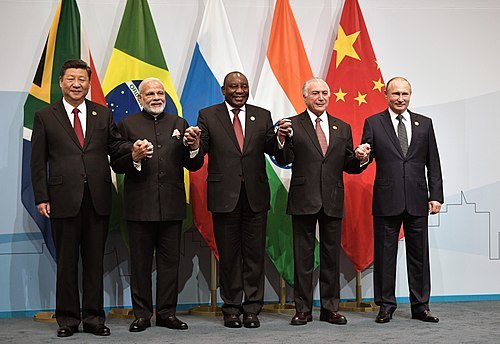
Image licensed under CC BY 4.0? by Пресс-служба Президента Российской Федерации
0 notes
Text
Learn About Some Important Amendments of the Constitution|SSC CGL Tier-1||
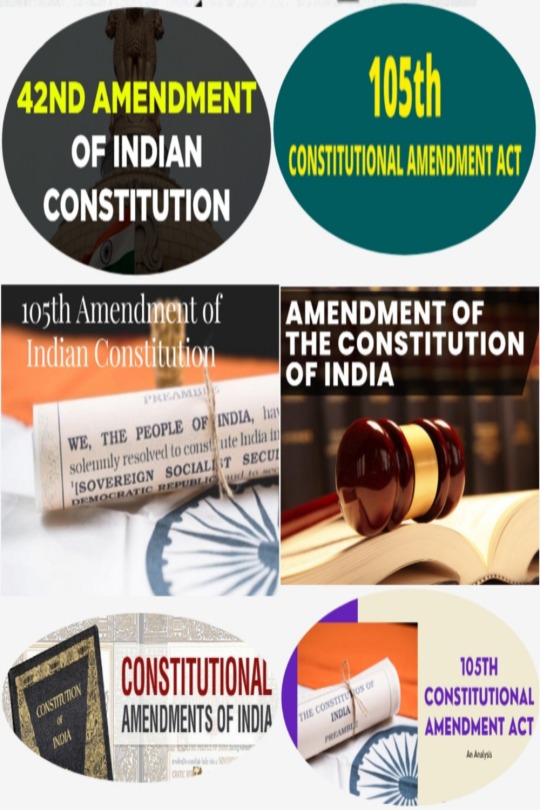
What is the 105th Amendment?
What is 106 amendment of Indian Constitution?
भारतीय संविधान का 106 संशोधन क्या है?
When was 106th Constitutional Amendment Act passed?What is the latest amendment of the Constitution of India 2023?What is the 104 amendment of the Constitution?What is the 100 amendment in Indian Constitution?What is the 100th Amendment of the Constitution?How many amendments are there in Indian Constitution in 2023?When was 105th amendment introduced?What is the 128th Amendment Bill?Is GST 101 or 122 Amendment?What is 125th amendment Bill?Who wrote our Constitution?When was Article 31 removed?Which country first introduced GST?Which PM introduced 9th schedule?What is the 9th schedule?Who is the mother of Indian Constitution?What is the 122 Amendment bill related to?What is the First Amendment bill?
Learn About Some Important Amendments of the Constitution|SSC CGL Tier-1||
||List of Important Amendments in Indian Constitution||
1st Constitutional Amendment Act , 1951 -
This amendment added Article , 15(4) and Article , 19(6) and brought changes in the right to private property in pursuance with the decision of Supreme Court concerning fundamental rights.
9th schedule to the Constitution was also added by it.
7th Constitutional Amendment Act , 1956 -
Through this amendment the implementation of State Reorganisation Act, was made possible.
The categorisation of States into Part A , Part B and Part C ceased henceforth.
Part C states were redesignated as Union Territories.
The seats in the Rajya Sabha and in the Union and State Legislatures were reallocated.
It also effected changes regarding appointment of additional and acting judges , High Courts and their jurisdictions etc.
10th Constitutional Amendment Act , 1961 -
Incorporated Dadra and Nagar Haveli as Union Territory.
12th Constitutional Amendment Act , 1962 -
Inclusion of territories of Goa , Daman and Diu into the Indian Union.
13th Constitutional Amendment Act , 1962 -
Insertion of Article 371 A to make special provisions for the administration of the State of Nagaland.
14th Constitutional Amendment Act , 1962 -
Pondicherry , Karaikal Mahe and Yenam , the former French Territories , were specified in the Constitution as the Union Territory of Pondicherry (now Puducherry).
Enabled the UTs of Himachal Pradesh , Manipur , Tripura , Goa , Daman and Diu and Pondicherry to have Legislature and council of Ministers.
15th Constitutional Amendment Act , 1963 -
It raised the age of retirement of a High Court Judge from 60 to 62.
Extended the jurisdiction of High Court to issue writs under Article 226 to a Government or authority situated outside its territorial jurisdiction where the cause of action arises within such jurisdiction.
16th Constitutional Amendment Act , 1963 -
Changes were effected in Article 19 to enable the Parliament to make laws providing reasonable restrictions on the freedom of expression in the larger interests of sovereignty and integrity of India.
Amendments were made in the form of oath contained in the 3rd Schedule with emphasis on upholding the sovereignty and integrity of India.
19th Constitutional Amendment Act , 1966 -
Article 324 was amended to clarify the duties of the Election Commission. It deprived the Election Commission of the power to appoint election tribunals for deciding election disputes of members of Parliament and State Legislatures.
21st Constitutional Amendment Act , 1967 -
Sindhi language was included as 15th regional language in the 8th schedule.
24th Constitutional Amendment Act , 1971 -
It was a retaliatory act of the Parliament to neutralise the effect of the judgement in Golak Nath Case.
It affirmed the Parliament's power to amend any part of the Constitution , including Fundamental Rights by amending Article 368 and 13.
It made obligatory for the President to give assent to Amendment Bills , when they are presented to him/her.
25th Constitutional Amendment Act , 1971 -
(came into force on 20.04.1972) :
It restricted the jurisdiction of the Courts over acquisition laws with regard to adequacy of Compensation.
This amendment came primarily in the wake of Bank Nationalization Case and the word 'amount' was substituted in place of 'compensation' in Article 31.
It also provided that no law passed by the State to give effect to Directive Principles specified under clauses (b) and (c) of Article 39 can be declared void on the ground that it was inconsistent with Fundamental Rights conferred by Article 14 , 19 and 31.
26th Constitutional Amendment Act , 1971 -
This amendment withdrew the recognition to the rulers of Princely States and their Privy purses were abolished.
30th Constitutional Amendment Act , 1972 -
It provided that only such appeals can be brought to the Supreme Court which involve a substantial question of law.
The valuation aspect of Rs 20,000 for appeals in civil cases to the Supreme Court was abolished.
31st Constitutional Amendment Act , 1973 -
By this amendment , the seats of the Lok Sabha was increased from 525 to 545 but reduced the representation of UTs in Lok Sabha from 25 to 20.
35th Constitutional Amendment Act , 1974 -
Accorded status of Associate State to Sikkim by ending its protectorate kingdom status which was a novel concept introduced in the Constitution.
36th Constitutional Amendment Act , 1975 -
Made Sikkim a full fledged State of the Union of India.
38th Constitutional Amendment Act , 1975 -
Clarified that declaration of emergency by the President and promulgation of Ordinance by the President or Governor can not be challenged in any Court on any ground.
39th Constitutional Amendment Act , 1975 -
The disputes or questions regarding elections of President , Vice-President , Prime Minister and Speaker oof Lok Sabha were taken out of the purview of judicial review of the Supreme Court or High Courts.
42nd Constitutional Amendment Act , 1976 -
(Mini Constitution) :
The 42nd Amendment made fundamental changes in the constitutional structure and it incorporated the words 'Socialist' , 'Secular' and 'Integrity' in the Preamble.
Fundamental Duties were added in Part 4A.
Directive Principles were given precedence over Fundamental Rights and any law made to this effect by the Parliament was kept beyond the scope of Judicial review by the court.
It made the power of Parliament supreme so far as amendment to the Constitution was concerned.
It authorised the Supreme Court to transfer certain cases from one High Court to another and redefined the writ jurisdiction of the High Courts.
It provided for administrative Tribunals for speedy justice.
It empowered the centre to deploy armed forces in any State to deal with the grave law and order situation.
It authorised the President to make the Proclamation of Emergency for any part of the country or to whole of India.
It made it obligatory for the President to act on the advice of the Council of Ministers.
Tanure of the Lok Sabha and the State Assemblies was increased by 1 year.
43rd Constitutional Amendment Act , 1977 -
The 43rd Amendment omitted many articles inserted by 42nd Amendment.
It restored the jurisdiction of the Supreme Court and the High Courts , which had been curtailed under the 42nd Amendment.
44th Constitutional Amendment Act , 1978 -
The Amendment was brought by the Janta Party Government which repealed some of the changes effected by 42nd Amendment , omitted a few and provided alterations.
Right to property was taken away from the list of Fundamental Rights and placed in a new Article 300 A as an ordinary legal right.
Constitutionality of the Proclamation of Emergency by the President could be questioned in a court on the ground of malafide (42nd Amendment had made it immune from Judicial review).
It brought the revocation of a Proclamation under Parliamentary control.
In Article 352 regarding National Emergency , the words 'internal disturbance' were substituted by the words 'armed rebellion'.
It authorised the President to refer back the advice to the Council of Ministers for reconsideration , but made it binding for the President to act on the reconsidered advice.
The power of the Courts to decide disputes regarding election of Prime Minister and Speaker was restored.
Constitutional protection on publication of Proceedings of Parliament and State Legislatures was provided.
List of All Important Amendments in Indian Constitution |UPSC|SSC|
52nd Constitutional Amendment Act ,1985 -
This amendment was brought about during Rajiv Gandhi Regime with a view to put an end to political defections.
It added 10th schedule to the Constitution containing the modes for disqualification in case of defection from the Parliament or State Legislature.
55th Constitutional Amendment Act , 1986 -
The formation of Arunachal Pradesh took place with special powers given to the Governor.
It also provided for a 30-member State Assembly.
56th Constitutional Amendment Act , 1987 -
Goa was made a full fledged State with a State Assembly but Daman and Diu stayed as UT.
57th Constitutional Amendment Act , 1987 -
It provided for reservation of seats for Scheduled Tribes of Nagaland , Meghalaya Mizoram and Arunachal Pradesh in Lok Sabha.
Seats were also reserved for the scheduled Tribes of Nagaland and Meghalaya in the State assemblies of Nagaland and Meghalaya.
58th Constitutional Amendment Act , 1987 -
An authoritative text of the Constitution in Hindi was provided to the people of India by the President.
59th Constitutional Amendment Act , 1988 -
It amended Article 356 to provide that the declaration of Emergency may remain in Operation upto 3 years and also authorised the Government to Proclaim Emergency in Punjab on ground of "internal disturbance".
The amendment made in Article 352 thus provided that the emergency with respect to Punjab shall operate only in that State.
61st Constitutional Amendment Act , 1988 -
It brought about an amendment to Article 326 for the reduction of voting age from 21 to 18 years.
62nd Constitutional Amendment Act ,1989 -
It increased the period of reservation of seats provided to the Schedule Caste and Scheduled Tribes for another 10 years i.e. upto 2000 A.D.
The reservation of for Anglo-Indians through nomination in case of their inadequate representation , was also extended up to 2000 A.D.
65th Constitutional Amendment Act , 1990 -
A National Commission for Scheduled Caste and Schedule Tribes with wide powers was provided to take care of the cause of SCs/STs.
66th Constitutional Amendment Act , 1990 -
This amendment provided for the inclusion of 55 new land Reform Acts passed by the States into the 9th schedule.
69th Constitutional Amendment Act , 1991 -
Article 239-4A and 239-4B were inserted in the Constitution to provide a National Capital Territory designation to Union Territory of Delhi with a Legislative Assembly and Council of Ministers.
70th Constitutional Amendment Act , 1992 -
Altered Article 54 and 368 to include members of Legislative Assemblies of Union Territories of Delhi and Pondicherry in the electoral college for the election of the President.
71st Constitutional Amendment Act , 1992 -
It included Manipuri , Konkani and Nepalese languages in the 8th Schedule.
73rd Constitutional Amendment Act , 1992 -
The institution of Panchayati Raj received Constitutional guarantee , status and legitimacy.
11th Schedule was added to deal with it.
It also inserted Part 9th , containing Article 243 , 243A to 243O.
74th Constitutional Amendment Act , 1992 -
Provided for Constitutional sanctity to Municipalities by inserting Part 9-A containing Article 243P to 243ZG and the 12th Schedule which deals with the items concerning Municipalities.
77th Constitutional Amendment Act , 1995 -
By this Amendment a new clause 4A was added to Article 16 which authorised the State to make provisions for Scheduled Castes and Scheduled Tribes with regard to promotions in Government jobs.
78th Constitutional Amendment Act , 1995 -
This amended the 9th Schedule of the Constitution to insert 27 Land Reform Acts of various States.
After this the total number of Acts included in the 9th Schedule went upto 284.
79th Constitutional Amendment Act , 1999 - Amended Article 334 to extend the reservation of seats for SCs/STs and Anglo-Indians in the Lok Sabha and in the State Legislative Assemblies upto 60 years from the commencement of the Constitution (i.e. , till 2010).
80th Constitutional Amendment Act , 2000 -
Amended Article 269 and substituted a new Article for Article 270 and abolished Article 272 of the Constitution.
This was based on the recommendation of the 10th Finance Commission.
This Amendment was deemed to have come into operation from 1st April 1996.
The Amendment widened the scope of the Central taxes and duties on the consignment of goods levied by the Government of India and distributed among States.
81st Constitutional Amendment Act , 2000 -
Amended Article 16(1) of the Constitution and added a new clause (4-B) after clause (4-A) to Article 16(1) of the Constitution.
The new clause (4-B) ends the 50% ceiling on reservation for Scheduled Caste and Schedule Tribes and other Backward Classes in backlog vacancies.
82nd Constitutional Amendment Act , 2000 -
This Amendment restored the relaxation in qualifying marks and standards of evaluation in both job reservation and promotions to Schedule Castes and Schedule Tribes which was set aside by a Supreme Court's Judgement in 1996.
Ans
84th Constitutional Amendment Act , 2001 -
This Amendment provided that till the publication of the relevant figures of the first census after 2026 the ascertainment of the population of a State for following purposes shall be made on the basis of the census shown against each of them :
∆ Election of the President under Article 55 - 1971 census.
∆ Allotment of seats to each State in Lok Sabha -- 1971 census.
∆ Division of State into territorial Lok Sabha Constituencies -- 1991 census.
∆ Composition of Legislative Assemblies under Article 170 --1991 census.
∆ Reservation of seats for SC/ST in the Lok Sabha under Article 330 -- 1991 census.
85th Constitutional Amendment Act , 2001 -
It amended clause (4-A) Article 16 and substituted the words "in matters of promotion , with consequential seniority , to any class" for the words "in matter of promotion to any class".
The Amendment provided for 'consequential seniority' to the SCs/STs for promotion in Government Services.
86th Constitutional Amendment Act , 2002 -
Added a new Article 21A after Article 21 which makes the right of education for children of the age of 6 to 14 years a Fundamental Right.
Substitutes Article 45 to direct the State to endeavour to provide early childhood care and education for all children until they complete the age of 6 years.
Added a new Fundamental Duty to Part 4 (Article 51A) of the Constitution.
87th Constitutional Amendment Act , 2003 -
Provided that the allocation of seeds in the Lok Sabha and division of each State into territorial Constituencies will be done on the basis of population as ascertained by the '2001 census' and not by '1991 census'.
88th Constitutional Amendment Act , 2003 -
This amendment inserted a new Article 268A after Article 268 which in power the Union of India to Levy 'service tax'.
This tax Selvi collected and appropriated by the Union and States in the manner as formulated by Parliament.
89th Constitutional Amendment Act , 2003 -
Provided for this establishment of a separate National Commission for Scheduled Tribes by bifurcating the existing National Commission for Scheduled Castes and Scheduled Tribes.
The Commission shall consist of a chairman Vice-Chairman and three other members.
They shall be appointed by the President of India.
90th Constitutional Amendment Act , 2003 -
This amendment was necessitated due to creation of Bodoland Territorial Areas District within the State of Assam by agreement reached between the Centre and Bodo representative for solving Bodoland problem.
It stated that the representation of Scheduled Tribes and non Scheduled Tribes in the constitution of the Bodoland Territorial Areas District shall be maintained.
It meant that the Representation of the above categories Shall remain the same as existed prior to the creation of Bodoland Territorial Areas District.
91st Constitutional Amendment Act , 2003 -
This amendment limits the size of Ministries at the Ventre and in States.
According to new Clause (1-A) the total number of Ministers , including the Prime Minister in the Union Council of Ministers or Chief Minister in the State Legislative Assemblies shall not exceed 15% of the total members of the Lok Sabha in the Centre or Vidhan Sabha in the States.
The new Clause (1-B) of article 75 provides that a member of either House of Parliament belonging to any political party who is disqualified for being member of that house on the ground of defection shall also be disqualified to be appointed as a Minister under clause (1) of Article 75 and 164 until he is again elected.
However , the number of Ministers , including the Chief Minister in a State shall not be less than 12 (in smaller size like Sikkim , Mizoram and Goa).
92nd Constitutional Amendment Act , 2003 -
It amended the 8th Schedule of the Constitution and has insulted 4 new languages in it , namely -- Bodo , Dogri , Maithili and Santhali.
After this amendment the total number of constitutionally recognised official languages has become 22.
93rd Constitutional Amendment Act , 2005 -
Provided reservation in admissions in private unaided educational institutions for students belonging to schedule caste/tribes and other backward classes.
94th Constitutional Amendment Act , 2006 -
Excluded Bihar from the provision to clause (1) of Articles 164 of the Constitution which provides that their shall be a Minister in charge of tribal welfare who may in addition be in charge of the Welfare of the Scheduled Caste and backward classes in Bihar , Madhya Pradesh and Odisha.
It extends the provisions of clause (1) of Article 164 to the newly formed States of Chhattisgarh and Jharkhand.
95th Constitutional Amendment Act , 2009 -
Extended the reservation of seeds for SCs and STs in the Lok Sabha and and State Assemblies by another 10 years (beyond January 25 ,2010).
The time period of 60 years under Article 334 of the Constitution was to lapse on January 25 ,2010.
Through this amendment in Article 334 the words "60 years" has been substituted by "70 years".
96th Constitutional Amendment Act , 2011 -
Substituted the word 'Oriya' by the word 'Odia' in the entry 15 in the 8th Schedule.
97th Constitutional Amendment Act , 2011 -
Amendment of Article 19 [In Part - 3 , in Article 19 , in clause (l) , in sub clause (c) , after the words 'or Unions' , the words 'or co-operative societies' shall be inserted].
Insertion of new Article 43B in Part 4 (" 43B. The state shall endeavour to promote voluntary formation , autonomous functioning , democratic control and professional management of co-operative societies").
98th Constitutional Amendment Act , 2012 -
Insertion of Article 371J [Special provisions with respect to State of Karnataka].
0 notes
Text
Revving into 2024: Unveiling the Hottest New Cars - From Next Gen Swift to High-Tech BMWs and Citroen's Unique C3X Sedan
New Post has been published on https://majornewshub.com/unveiling-the-hottest-new-cars/
Revving into 2024: Unveiling the Hottest New Cars - From Next Gen Swift to High-Tech BMWs and Citroen's Unique C3X Sedan
Revving into 2024: Unveiling the Hottest New Cars – From Next Gen Swift to High-Tech BMWs and Citroen’s Unique C3X Sedan
Welcome to our 2024 new car special and while we’ll talk of upcoming SUVs and electric vehicles in future , this one’s all about new and updated hatchbacks, sedans and MPVs due for launch over the coming year.
let us know in the comments which is the car you’re most excited about and while you’re at it, do ensure you’re subscribed to AutoCraft India and have hit the bell icon to be notified every time we have.
Next Gen Maruti Suzuki Swift:
Photo Credit Maruti Suzuki
Let’s start with hatchbacks. There’s only one all new hatchback set for launch next year and it’s a big one. It’s the next gen Maruti Suzuki Swift. Shown in near production ready form at the Japan Mobility Show last month, the new Swift is not a big departure to the current car in its basic look.
However, the new car has a longer nose with a clamshell bonnet, a pair of freshly designed LED headlamps with L -shaped LED DRLs as well as a new grille finished in gloss black. There’s a character line that runs the length of the car and a detail of note at the sides is that the rear door handle has been moved to the conventional position at the door from the C pillar as on the current car.
Styling at the back is unmistakably Swift with new C -shaped LED elements on the tail lamps enhancing the look. Inside the Swift looks familiar with the dash design very similar to that of the Frans.
It also shares several bits with other Maruti’s like the freestanding infotainment system, the climate control switches and flat bottom steering wheel. Seat comfort as well as space remain quite similar to the current version as well.
The new Swift will debut in India with the new 1 .2 -litre 3 -cylinder engine in place of the current K -12 1 .2 -litre 4 -cylinder unit. Codename Z12, the new naturally aspirated engine will make about the same 90hp as the K -12 unit but torque is said to be improved which should help performance in turn.
Enhanced efficiency and reduced emissions are also promised. The engine will likely be offered with manual and AMD gearboxes. The model will be built on Suzuki’s heart tech platform as before but expect some enhancements to the build as was the case with the latest Gen Baleno.
The new Swift has already been spotted testing in India and is expected to go on sale in early 2024. Pricing will be in the range of 6 .5 to 9 .5 lakh rupees extra room.
Tata Altroz Update:
The Tata Altroz is due for an update and the car maker hinted at what’s to come with the Altroz racer displayed at AutoExpo 2023.
The updated Altroz will see a feature upgrade with the move to Tata’s new 10 .25 inch touchscreen and digital dials and a sunroof ventilated front seats and a wireless phone charger are also expected.
Photo credit Tata Motors
The safety suite will also be enhanced with six airbags. Engine options will include the current 1 .2 litre naturally aspirated petrol engine and 1 .5 litre diesel while the 1 .2 litre turbo petrol is likely to see power up by 10 hp to 120 hp.
There will also be the move to a 6 speed manual gearbox in place of the current 5 speed unit. Over to the new sedans headed our way.
8th Gen BMW 5 Series (Long Wheelbase):
The 8th gen BMW 5 series is out and the big news is that it’s coming to India in long wheelbase form that’ll help level the playing field with the Mercedes E -Class that’s sold in India in extended form.
In look the latest 5 is subtle as new BMWs go. The grille is the focal point up front and comes flanked by swept back headlamps. Surfacing is tight all around though the rear end doesn’t link to its predecessors.
Revving into 2024: Unveiling the Hottest New Cars – From Next Gen Swift to High-Tech BMWs and Citroen’s Unique C3X Sedan
Inside there’s the very best of new HBMWs. 12 .3 inch digital dials and a 14 .9 inch touchscreen lend the new 5 the requisite modernity and there’s 7 series like crystal look detailing for a rich look.
Photo Credit BMW UK
There’s a comprehensive ambient lighting suite as well. Space at the back will see a big jump up thanks to the move to a long wheelbase format. 2 .0L petrol and diesel engines with mild hybrid tech will be the mainstay of the range and 3 .0L petrol and diesels could be offered as well.
The 5 series’ electric sibling the i5 is also India bound and will be covered in more detail in our upcoming new EVs for 2024.
Citroen is readying its first sedan for India and in true French fashion it’ll be a unique take on the sedan.
Citroen C3X
Think of the model as a sedan with the ground clearance of an SUV. To be called the C3X, this high riding and rugged sedan will stand out amongst mid -sized sedan rivals like the Honda City, Hyundai Verna, Volkswagen Virtus and Skoda Slavia.
Powering Citroen C3X will be a 1.2-litre turbo petrol engine that generates 110 PS of max power and 190 Nm of peak torque. Both manual and automatic transmission options will be available. In comparison, most of the leading midsize sedans have larger capacity and more powerful turbo petrol engines. Strong hybrid option is also available with Honda City. Citroen could use the C3X name for its upcoming sedan, based on similar-styled C4X sold in Europe. Or, as revealed in trademark filings, C3 Fastlounge name can also be used.
Photo Credit Citroën (citroen.in)
Revving into 2024: Unveiling the Hottest New Cars – From Next Gen Swift to High-Tech BMWs and Citroen’s Unique C3X Sedan
Read more https://majornewshub.com/
Useful https://www.youtube.com/watch?v=jiB9g5osMkI
0 notes
Link
0 notes
Text
India's Largest C&D Waste Processing Plant Powered by CFlo Technology unveiled by Delhi CM Arvind Kejriwal

19 October, 2023
Delhi Chief Minister Shri Arvind Kejriwal marked a significant milestone in the state’s environmental journey as he inaugurated India's largest Construction and Demolition (C&D) waste processing plant on 8th October 2023. The plant, set up by EverEnviro, boasts a processing capacity of 2,000 metric tonnes per day and will utilize CFlo technology for efficient recycling and producing high-quality output which will be put back into construction to promote a circular economy. This state-of-the-art facility is poised to revolutionize waste management in the national capital.
Delhi is no stranger to the environmental challenges posed by the massive volume of C&D waste generated daily. Shri Kejriwal's vision, underscored by the use of cutting-edge CFlo technology, aims to address this long-standing concern. The CM highlighted the importance of repurposing C&D waste into essential products, such as tiles and bricks, during his inaugural address.
"Delhi generates a colossal amount of construction and demolition waste, and this plant, equipped with advanced technology, will ensure that this waste is efficiently recycled and converted into valuable products. This is a significant step toward sustainable development, reducing pollution, and creating a cleaner and greener Delhi," said Chief Minister Arvind Kejriwal.
The facility, strategically located in Jahangirpuri near Burari, will efficiently cater to the waste generated in various parts of the city, thereby reducing the burden on landfills and promoting responsible waste management practices.
The inauguration ceremony witnessed the symbolic commencement of the plant's operations, demonstrating its capacity to recycle waste materials effectively. The event was attended by government officials, local dignitaries, and environmental activists who lauded the initiative as a groundbreaking step towards a cleaner and more sustainable Delhi. Environmentalists and urban planning experts have widely praised the move as an essential step towards sustainable urban development.
As outlined by CFlo’s Chief Revenue Officer, Nitin Dubey, “CFlo technology has been a game-changer in the field of waste management, making recycling more efficient and environmentally friendly. India’s first C&D Waste processing plant was also powered by CFlo technology over a decade back and now we are proud to design and manufacture India’s largest C&D Waste processing plant. It stands out as an eco-friendly solution with its technology designed to eliminate air pollution, maintain low sound levels, and promote sustainability by achieving 90-95% water recycling and zero wastewater discharge. Furthermore, the plant integrates smart features, being IoT-connected and accessible for remote monitoring and control through a central command center. What makes this technology particularly impressive is its capacity to transform Construction and Demolition Waste into sand and aggregate, meeting the specifications outlined in IS:383/2016, thus contributing to resource conservation and a greener future.”
As the plant goes into full operation, it is expected to significantly improve the city's environmental landscape and set an example for other urban centers in India dealing with similar challenges. The recycling of C&D waste into valuable products, driven by CFlo technology, will not only reduce pollution but also conserve natural resources by promoting a circular economy, making Delhi an eco-friendly and more sustainable place to live.
For more information please visit us : https://cfloworld.com/cflo-technology-unveiled-delhi-cm-arvind-kejriwal.html .
================================================
Company Name : CFlo World
Address : Ecospace Business Park Block 4A/Floor 6, Action Area II New Town, Rajarhat Kolkata 700 160, India
Official Email Address: [email protected]
Phone: +91 33 3029 3800
Fax: +91 33 3029 3802
Url : https://cfloworld.com/
0 notes
Text

Best of 5 JEE Coaching Institutes Pune, 2024-2025

The JEE is one of India’s most prestigious and competitive examinations, serving as the gateway to renowned engineering institutions like the Indian Institutes of Technology (IITs), National Institutes of Technology (NITs), and other top-tier colleges.
JEE is regarded as one of the toughest entrance exams, and to clear this exam, you need to work very hard and be committed to your goal. Joining a coaching class helps you make your JEE journey easier and increases your chance of success. Due to the competitive nature of the exam, it is imperative to get coaching from mentors who will guide you at every step, enhance your chances, and help you get better at the game.
The four key areas that can help you make the right decision in choosing the best JEE coaching class in Pune are:
Their results in JEE Main and Advanced
The faculty (whether they are IITians and have hands-on experience with the JEE Main and Advanced)
The environment they provide.
Effective doubt-solving systems in place.
You will find a JEE coaching class in every corner of Pune, and choosing the right one is what will decide your future.
Hence, we bring to you an updated version of the best JEE coaching institutes in Pune.
1. Bakliwal Tutorials
Bakliwal Tutorials is a leading JEE coaching class in Pune and Maharashtra as well. This is the only coaching in Pune that produces consistently excellent results year after year, and all their students are full-time students.
Bakliwal Tutorials was established in April 2005. BT began with the aim of helping students preparing for IIT-JEE realize their dreams and make sure that the preparation process itself becomes a fun-filled and growth-involving experience. Bakliwal Tutorials offers foundation courses for 8th, 9th, and 10th grade students and a 2-year comprehensive course for 11th grade students.
While they are primarily focused on engineering entrance exams like JEE, BITSAT, and MHT-CET, their courses are very comprehensive and cover the syllabus of KVPY, INMO, and the school or college syllabus as well.
Teachers-
Bakliwal Tutorials has published a full list of their faculty on their website. If you review the list in detail, you will see that 90 percent of the faculty members are IITians, and all of them are experts in the respective subjects. So you can be assured of the best quality education.
They also have a feedback system in place, wherein every student and their parents are asked for feedback about the teachers and it is ensured that only the teachers that have 9 or higher on 10 rating stay with Bakliwal Tutorials
Highlights–
Doubt Solving: Doubt solving is given a lot of importance at Bakliwal Tutorials. They have four doubt-solving mechanisms in place.
a. Post the session;
b. Special Doubt Sessions;
c. Telegram Groups
d. Doubt clearing platform where the students can post their doubts and the teachers get back to them with video solutions.
E-diary: They provide an academic diary to their Comprehensive Course students where they can continuously analyze (monitor) the progress of their preparation and accordingly chart out improvement plans.

Bakliwal Tutorials has produced Pune rank 1 10 times and Maharashtra rank 1 5 times in the past 13 years. And a single-digit rank for the 3rd time in the last 6 years (AIR 2, 7, and 7 in 2017, 20 and 22, respectively) in JEE advanced.
BT has completed the hat-trick of producing Pune Rank 1 in JEE Main and Advanced as well (2022, 2021, 2020).
Year 2020:
The best result for JEE Advanced in Pune was from Bakliwal Tutorials. Vedang Asgaonkar, who got an AIR 7 in JEE Advanced, was a student of Bakliwal Tutorials. He was the Maharashtra as well as the Pune topper. A total of 12 students were in the top 800 AIR, and 64 students were in the top 5000 AIR. The total number of selections from Bakliwal Tutorials was 285 in JEE Advanced.
Year 2021:
Four students from Bakliwal Tutorials in Pune emerged as the top 4 Pune rankers in JEE Advanced 2021.
They had 4 students in the top 100 AIR, 13 in the top 500 AIR, and 25 in the top 1000 AIR.
That means 1 out of 40 students in the top 1000 in JEE Adv 2021 was a BT student. A total of 251 students cleared JEE Advanced from Bakliwal Tutorials.
Bakliwal Tutorials had more selections in the top 500, 1000, etc. than all the other institutes in Pune put together by a significant margin.
In JEE Main 2021, the top 3 Pune ranks were secured by Bakliwal Tutorials’ students. Naman Agarwal was the Pune Rank 1 with an AIR of 44 and a percentile of 99.998. This was followed by Jainesh Mehta and Shubhranil Chatterjee with an AIR of 132 and 176, respectively.
BT had 10 students in the top 500 AIR, 20 students in the top 1000 AIR, and 26 students who scored above the 99.9 percentile in JEE Mains 2021.
16 of the top 20 rankers from Pune were BTians. The total number of students that cleared JEE Mains from BT was 255.
Year 2022-
Bakliwal Tutorials produced the AIR 7 in JEE Advanced, Pratik Sahoo, who was the Pune and Maharashtra topper.
This was followed by Vedant Talegaonkar, who secured an AIR of 89 and was the Pune Rank 2.
15 of their students secured AIR within 800; 56 students are in the top 5000.
A total of 197 students from BT cleared the JEE Advanced 2022.
Amogh Bhagwat, from Bakliwal Tutorials, secured Pune rank 1 in JEE Main 2022 with an all-India rank of 98. Bakliwal Tutorials produced the Pune Topper for the third time in a row (2020, 2021, 2022).
They had 9 students in the top 1000 AIR, 44 in the top 5000 AIR, and 446 total selections. 7 students secured a perfect 100 percentile in any one of the 3 subjects (P/C/M).
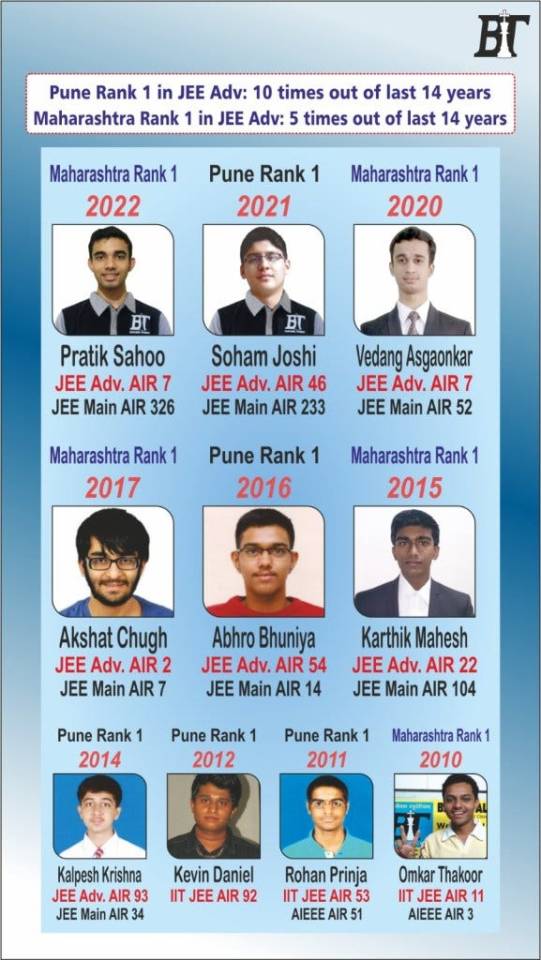

JEE Advanced: This year, the number of students clearing JEE Advanced increased by 100, and they had 257 total selections.
17 students from BT secured an All India Rank (AIR) in top 1500, 39 in top 3000, 68 in top 5000, and a whopping 121 in top 10000.
These are the maximum number of selections in Pune in the 1500, 3000, 5000, and 10,0000000 by a large margin.
Anirudha Saraf secured an All India Rank (AIR) of 110, and Apurva Mahajan secured 319 AIR. Apurva was also the Pune Girls Topper.
JEE Main 2023: Omkar Vijay Raichurkar was Pune Topper in JEE Main Phase 1, 2023, with AIR 112, Anirudha Saraf secured AIR 150, and Apurva Prakash Mahajan was Pune Girls’ Topper.
Read on here to know more: https://punejagoiitjee.com/best-of-5-jee-coaching-institutes-pune-2024-2025/
0 notes
Text
Income Tax Faceless Assessment in India- The Journey So Far
The Government introduced the faceless Income tax assessment with the intention to make the whole assessment process faceless, paperless and on electronic mode. The main objective behind its inclusion in the Indian tax system was to reduce the face to face interaction or human interface between the tax department and the taxpayer or assessee.
It came as a fresh breadth of air for taxpayers especially in crucial times of COVID-19 pandemic where social distance and being at home is the key to be protected from the deadly disease. It also helped in removing the fraudulent activities or any corruption in between by the involved parties due to its whole online procedure with utmost transparency.

But with time, it became clearer that shifting the Income Tax assessment process from manual mode to the online mode can only be backed when there is a shift in the tax authority’s attitude. The recent cases and writ petitions filed by various taxpayers in different courts around the country, in a way states that we need a more positivity in the attitude of the taxation department for making the process a success and not mere an example of a step taken towards digitizing the process.
The principle of natural justice has always existed in the judicial parlance and with the Income tax faceless assessment, this principle has got even more strength. If the rights of the taxpayer are denied during any given point of time in the Income Tax assessment, they can seek a remedy by approaching the court or appellate bodies for better judgments.
In this article, we will be bringing out some issues related to the faceless Income tax assessment as discussed by various courts.
These appeals and orders have also provided a better clarity on how the whole Income Tax assessment process must be done and the main purpose behind it should be fishing out any fraud transaction or detail and not to make the assesses guilty.
No Show Cause Notice (SCN) or draft assessment order issued before passing the order:
As per the provisions of the Income Tax Act, the taxpayer to be assessed by the taxation authority must be provided an Income Tax notice to inform or intimate them about the proposing any addition or any disallowance if any from the assessment.. Also, before the final Income Tax assessment order is being passed by the Assessing Officer (AO) it is their duty to consider any submissions made by the assessee.
In order dated 21st September, 2021 in the case of ChanderArjandasManwani – Writ Petition No.3195/2021, the court held and set aside the assessment order issued by the AO just because the process of the issuing of Show Cause Notice and final draft assessment order was not properly followed.
In this case, the AO passed the order without providing any SCN, however, the assessee had already furnished the required details required for the Income Tax faceless tax assessment when the same were asked to be furnished through a notice by the department. The tax department gave reasons that the notice issued for furnishing documents by the taxpayer was itself the SCN but the court held that it was not as the SCN is totally different from the one for calling details and information. Some similar cases with orders are-
A similar matter was observed in Delhi High Court in RMSI Private Ltd. Vs. National E-Assessment Center W.P. (C) 6482/2021.
SHL (India) private Limited Vs. UOI and others W.P. (L) No.11293/2021.
Insufficient time provided for replying to the SCN:
In the case of Suresh Kumar Lakhotiya- Writ Petition No.2848/2021, the High Court of Mumbai noted and decided on 8th September, 2021, where the assessment order was quashed due to the time period of only 30 hours was provided in the SCN for the taxpayer to reply the same and that too covered the weekend.
It is to be noted that as per the natural justice principle, one must be given adequate time period to furnish the required details. The time period is not mentioned in the Income Tax Act, however it must be rational enough taking in account the information that is required.
Virtual hearing not granted even on request:
One of the features of the Faceless Income Tax Assessment scheme is that assessee can ask for and must be provided with an opportunity of virtual hearing as and when they desire.
The Act does states that it’s totally up to the taxation authority where it deems necessary or fit to compel to such demands and grant a hearing but it is not mandatory.
But in certain cases, it was observed that in matters where the granting of virtual hearing should have been granted to the assessee and the process was not followed.
The matters in which courts held the same and quashed the assessment orders sue to the reason of being violating of this natural justice principle are as follows-
ChanderArjandasManwani- Writ Petition No.3195/2021- Order was passed on 21st September, 2021.
NeerajaRateriaWPO No.969/2021- Order was passed on 5th October, 2021.
Naresh Kumar GoyalVs. NFAC W.P. No. 6245/2021 and CM Appeals No.19753-54/2021: Order was passed on 12th July, 2021.
Submissions not considered:
In the case of Mantra Industries Limited W.P. No.1625/2021, the court ordered on 11th October, 2021 strictures against the Assessing Officer and asked the Ministry of Finance to look into this matter. The case highlighted the issues of not considering the submissions made by the taxpayer for the Faceless Income Tax Assessment, not granting the virtual personal hearing on request and filing a wrong affidavit by the taxation authority. The Mumbai High Court held this case as a gross violation of the rights provided to assessee.
Order passed before date of Compliance as per SCN:
In the case Antony Alphonse Kevin W.P. No.8379, 8932, 8934/2021 the Madras High Court held that the assessment order was passed before time period provided to the assessee for filing the reply. Therefore, an order dated 29th December, 2015 was passed by the bench to quash the assessment order that was considered as impugned for not considering the submitted materials and matter by the taxpayer.
Submission could not be filed due to tax department’s portal server down:
The Income Tax portal has recently been changed and upgraded with all sorts of software for making it more viable for taxpayers. Due to continuous up-gradation the taxpayers do face a lot of challenges to upload or open the website from time to time.
One such issue is the non-working of the portal on the last date of submission filing, which made it more difficult for some assessee to not submit the responses. The department ignored this issue and passed the orders without considering the same. In such instances the court held the department responsible.
As in the Fariq Chand Vs. National E-Assessment Center, Delhi bearing W.P. No. 8054/2021, where the court ordered on 9th August, 2021 and directed the department to issue a fresh assessment order to the assessee after taking all his submissions into consideration, which he couldn’t file due to crashed tax portal.
Assessment order passed before date of compliance:
The assessee have been facing the issue of assessment order passed before the due date for replying to the SCN or draft assessment order expires. This problem has become often in the new faceless Income tax assessment. In the following cases the respective courts reversed the same and held the department for issuing such orders way before the actual time-
Ekambaram Sukumaran bearing WP. No.10433, 11029 and 11032/2019: The order was passed on 27th April, 2021 by the Madras High Court.
Antony Alphonse Kevin W.P. No.8379, 8932, 8934/2021.
Thus, it may be inferred from above, that although the intention behind introduction of faceless income tax Assessment was to increase transparency and decrease the harassment of honest tax payers, however, till date, the purpose has not been achieved to its fullest. However, still it is early days and the government along with CBDT will definitely work out a mechanism to remove all the lacunas and anomaly’s so that desired purpose of transparent and faceless Income Tax Assessment can be achieved.
0 notes
